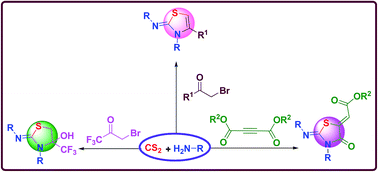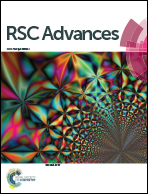An improved one-pot multicomponent strategy for the preparation of thiazoline, thiazolidinone and thiazolidinol scaffolds†
Abstract
A facile multicomponent synthesis of desirable medicinal scaffolds based on thiazoline, thiazolidinone and thiazolidinol derivatives has been disclosed. The synthesis employs the reaction of a primary amine and carbon disulphide in a microwave, to generate a symmetrical thiourea in situ. The subsequent addition of e.g. 3-bromo-1,1,1-trifluoropropan-2-one affords the desired product, in an efficient one-pot process.


 Please wait while we load your content...
Please wait while we load your content...